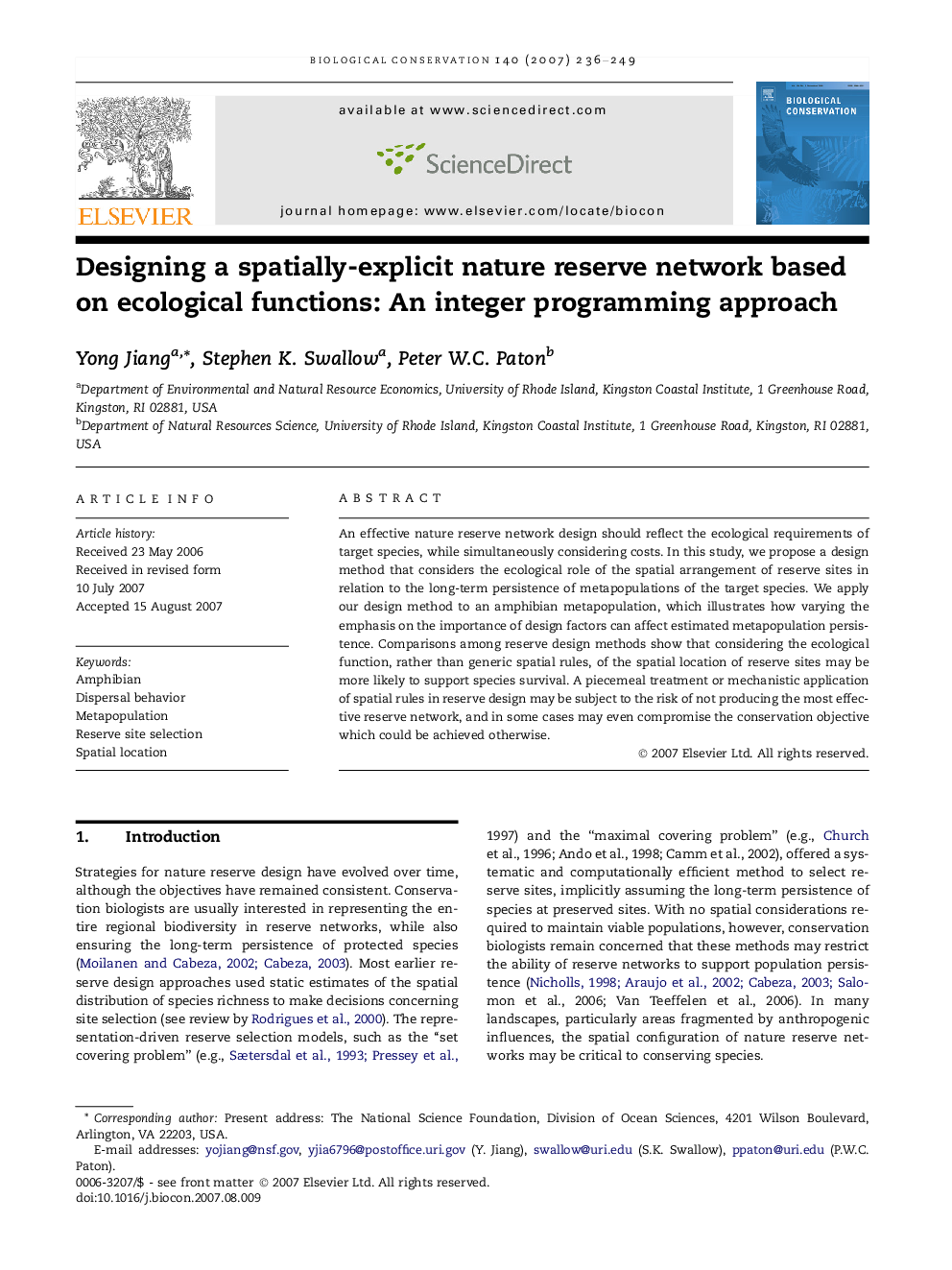| Article ID | Journal | Published Year | Pages | File Type |
|---|---|---|---|---|
| 4386977 | Biological Conservation | 2007 | 14 Pages |
An effective nature reserve network design should reflect the ecological requirements of target species, while simultaneously considering costs. In this study, we propose a design method that considers the ecological role of the spatial arrangement of reserve sites in relation to the long-term persistence of metapopulations of the target species. We apply our design method to an amphibian metapopulation, which illustrates how varying the emphasis on the importance of design factors can affect estimated metapopulation persistence. Comparisons among reserve design methods show that considering the ecological function, rather than generic spatial rules, of the spatial location of reserve sites may be more likely to support species survival. A piecemeal treatment or mechanistic application of spatial rules in reserve design may be subject to the risk of not producing the most effective reserve network, and in some cases may even compromise the conservation objective which could be achieved otherwise.
